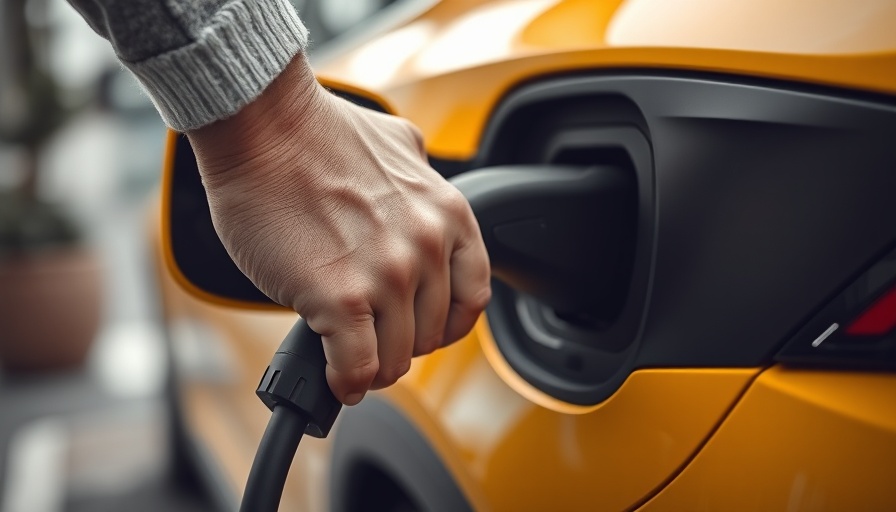
Understanding the Cost of Electric and Gas Vehicles
As the world moves toward sustainability, a critical factor in the transition to electric vehicles (EVs) is their long-term costs compared to traditional gas-powered cars. With ongoing debates about initial vehicle cost, maintenance, and fuel expenses, determining whether EVs are genuinely cheaper to own in the long run can seem daunting.
Initial Pricing Trends Favor EVs
Historically, electric vehicles have had steeper price tags, averaging about $55,544, which presents a barrier for potential buyers. However, recent market trends show significant decreases in the initial costs of EVs. In 2023, the average cost of a new EV dropped by approximately $14,300 compared to the previous year, reducing the price gap to just $2,800 compared to gas vehicles, according to Cox Automotive.
The availability of federal incentives, such as tax credits up to $7,500 for qualifying buyers, further contributes to lowering the effective price for many consumers. Those exploring the option of purchasing EVs have more reasons now, as the reduction in price, coupled with incentives, signals a potential future where EVs can be more affordable and accessible.
Fuel Costs: A Comparative Analysis
The most compelling argument for switching to electric vehicles lies in the cost of fueling. Data from various studies indicates that the average expense for charging an electric vehicle stands at approximately $485 per year, significantly less than the $1,117 average spent on gasoline for internal combustion engines. These savings become crucial when considering long-term ownership, as consumers might save thousands over a vehicle's lifetime.
Regional variations in energy costs also play a significant role in determining overall savings. Some states provide cheaper electricity rates, which can further enhance the cost-effectiveness of owning an electric vehicle. For instance, Washington state EV owners can save up to $14,480 over the vehicle's lifetime, while Hawaii may incur additional expenses, emphasizing the importance of understanding local utility costs.
Maintenance: Where EVs Shine
Beyond fuel costs, maintenance is another area where electric vehicles outshine their gas-powered counterparts. EVs generally require half the maintenance and repair costs, largely due to fewer moving parts and the absence of oil changes and spark plug replacements. While EVs do need standard maintenance checks, they are considerably more cost-effective in the long run.
This maintenance advantage is a significant plus for homeowners already looking for cost-efficient solutions, especially as many EVs utilize innovative technologies like regenerative braking to extend the lifespan of components like brake pads.
Institutional Incentives: Fueling the Transition
In addition to vehicle costs, institutional policies can impact the decision-making process for potential vehicle buyers. Various states and the federal government offer additional incentives for EV adoption, including rebates for charging infrastructure installation within homes. Availing these benefits can also lower the overall cost of converting to an electric-supported lifestyle.
For instance, the Inflation Reduction Act has not only expanded tax credits but also encouraged manufacturers to establish more local assembly of EVs and charging infrastructure, ensuring that potential buyers are incentivized to make the switch.
Predicting Future Trends in EV Ownership
With the advancements in battery technology and manufacturing becoming more efficient and cost-effective, it is expected that EV prices will continue to decrease. The growing competition amongst automakers is likely to lead to a wider array of affordable electric models, increasing consumer choices. Meanwhile, hybrid vehicles may also become attractive alternatives for drivers seeking a balance between electric and gasoline power.
As more EV models enter the market and average prices drop, it is anticipated that consumer adoption will increase significantly, further promoting eco-friendliness while reducing long-term costs.
Conclusion: Making the Switch
Considering the long-term savings and environmental benefits associated with electric vehicles, their appeal is expected to continue to grow, particularly among homeowners looking to reduce their energy costs. The combination of lower operational costs, potential for federal incentives, and advancements in vehicle technology positions EVs as a promising investment for the future.
If you are contemplating whether now is the right time to transition to an EV, calculate your potential savings based on your driving habits and local electricity costs. By understanding the potential benefits electric vehicles can offer, you position yourself at the forefront of the vehicle evolution, embracing both economic savings and sustainable practices.
 Add Row
Add Row  Add
Add 



